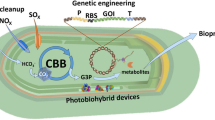Abstract
Many aspects of light energy transduction in photoreceptors are under study1,2. One important problem concerns the light-initiated primary event in rhodopsin and the identity of the primary photoproduct. It is usually assumed that the red-absorbing pigment bathorhodopsin3 is the first photoproduct. In cattle rhodopsin, it is produced within 6 ps of excitation4 and is stable at 77 K. However, Yoshizawa et al.5–7 have found a blue-absorbing pigment, hypsorhodopsin, in photosteady-state mixtures formed with orange light at liquid helium temperatures (∼5 K). On warming the hypsorhodopsin in the dark to liquid nitrogen temperatures (77 K), it converts to bathorhodopsin. These two results suggested that hypsorhodopsin might be a precursor of bathorhodopsin, but that presents difficulties. For example, hypso-type intermediates have not been seen for all visual pigments6. Moreover, when cattle rhodopsin was irradiated with blue light at liquid helium temperatures, it was converted to bathorhodopsin without forming detectable hypsorhodopsin6,7. FinaUy, rapid kinetic experiments to determine the time course of formation of bathorhodopsin and hypsorhodopsin have given ambiguous results4,8–10; this may be due to the use of rhodopsins from different species. Because squid rhodopsin seemed to have more hypsorhodopsin in photosteady states than cattle rhodopsin7, we have studied the photo products of another cephalopod rhodopsin at carefully controlled low temperatures (±0.2 K). We report here that octopus rhodopsin has a hypso intermediate that is easily formed on irradiation but that the batho-product appears before significant amounts of the hypso-product accumulates. Moreover, the thermal conversion of hypsorhodopsin to bathorhodopsin must be fitted with two rate constants, and the activation enthalpy of the faster process is almost zero, that is, it is temperature independent over the range studied.
Similar content being viewed by others
References
Honig, B. A. Rev. phys. Chem. 29, 31–57 (1978).
Honig, B., Ebrey, T., Callender, R. H., Dinur, U. & Ottolenghi, M. Proc. natn. Acad. Sci. U.S.A. 76, 2503–2507 (1979).
Yoshizawa, T. & Wald, G. Nature 197, 1279–1286 (1963).
Peters, K., Applebury, M. L. & Rentzepis, P. M. Proc. natn. Acad. Sci. U.S.A. 74, 3119–3123 (1977).
Yoshizawa, T. in Handbook of Sensory Physiology Vol. VII, pt 1 (ed. Dartnall, H. J. A.) 146–179 (Springer, Berlin, 1972).
Yoshizawa, T. & Horiuchi, S. in Biochemistry and Physiology of Visual Pigments (ed. Langer, H.) 69–81 (Springer, Berlin, 1973).
Shichida, Y., Tokunaga, F. & Yoshizawa, T. Photochem. Photobiol. 29, 343–351 (1979).
Shichida, Y., Kobayashi, T., Ohtani, H., Yoshizawa, T. & Nagakura, S. Photochem. Photobiol. 27, 335–341 (1978).
Monger, T. G., Alfano, R. R. & Callender, R. H. Biophys. J. 27, 105–116 (1979).
Kobayashi, T. FEBS Lett. 106, 313–316 (1979).
Tsuda, M. Biochim. biophys. Acta 545, 537–546 (1979).
Tsuda, M. Biochim. biophys. Acta 578, 372–380 (1979).
Horiuchi, S., Tokunaga, F. & Yoshizawa, T. Biochim. biophys. Acta 503, 402–404 (1978).
Author information
Authors and Affiliations
Rights and permissions
About this article
Cite this article
Tsuda, M., Tokunaga, F., Ebrey, T. et al. Behaviour of octopus rhodopsin and its photoproducts at very low temperatures. Nature 287, 461–462 (1980). https://doi.org/10.1038/287461a0
Received:
Accepted:
Issue Date:
DOI: https://doi.org/10.1038/287461a0
- Springer Nature Limited
This article is cited by
-
Photoreconversion of blowfly visual pigment proceeds through a slowly (13 ms) decaying intermediate
Journal of Comparative Physiology A (1989)
-
Photoenergetics of octopus rhodopsin
European Biophysics Journal (1986)





